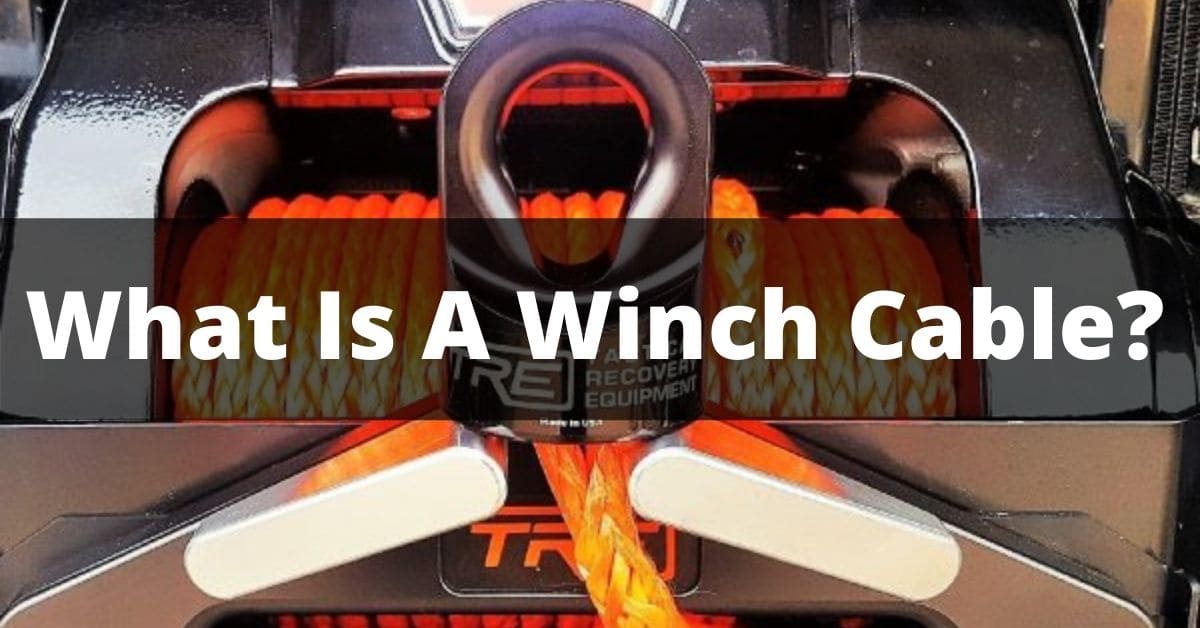A winch cable is used to haul something, typically by pulling on it with a machine. Typically, the winch cable is attached to one or more hooks and controlled by a winch.
When the hooks are pulled, the tension on the winch cable causes a mechanical advantage that helps to move or pull the object.
The use of a winch can be lifesaving in emergencies, such as rescuing people from a burning building.
Winch cables can also be used for other purposes such as moving large objects or hoisting people or objects over a distance.
A winch cable is typically made of steel or cable, with a fiberglass sheath to protect it from weather and wear.
The sheath may also have flotation devices to keep the cable afloat if it becomes entangled in something underwater.
Three Different Parts Of Winch Cable:
There are three sections to a winch cable:
- Core
- Sheath
- Braided cover
The core is the thickest part of the cable and is steel or other sturdy material.
The sheath is the outer layer covering the core and is made of either cloth or a synthetic material.
The braided cover is a protective layer that wraps around the sheath and is made of either metal or fabric.
Winch Cable Measurement:
Winch cables are typically measured in:
- Feet
- Pounds
- Meters
A cable that is 6 feet long would be called a “six-footer.” A cable that is 1,000 feet long would be called a “ten maternal.
Pull Rating:
When winching something with a winch, knowing the cable’s pull rating is essential. The pull rating is the maximum force that the cable can generate before it begins to stretch or break.
The higher the pull rating, the stronger the cable and the easier moving an object.
There are many different winches, each with its specific uses. Some common types of winches include:
The cable on a typical winch is made from steel or other sturdy material and has a pull rating of around 2,000 pounds.
This means that the cable can generate a maximum force of 2,000 pounds before it begins to stretch or break.
How To Attach And Use Winch Cable:
First, you need to attach the sheath to the core. The sheath is made from either cloth or synthetic material and is typically around 2 feet long.

You then need to attach the braided cover to the sheath. The braided cover is made from either metal or fabric and is typically around 6 feet long.
The cover has a number on it, which corresponds to the pull rating of the winch.
Once you have determined the pull rating, you can find a sheath and cover with the corresponding number.
You must attach the sheath and cover to the core and connect the cable to the winch.
Finally, you can attach the other end of the cable to an object you want to move. You can quickly move heavy objects to lift by workforce only by using a winch.
Winch Cable Types:
There are three types of winch cables:
- The drum
- The sheave
- The line
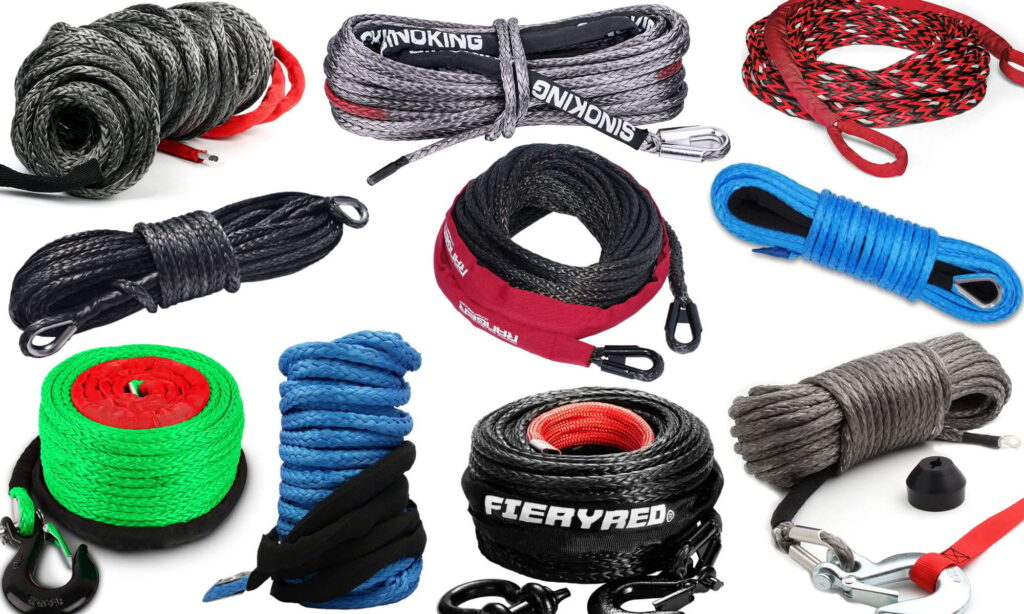
The drum cable is made from a strong wire tightly wound around a drum. The drum can rotate, which allows the cable to move the object.
The sheave cable is made from a strong wire tightly wound around a sheath. The sheath can rotate, which allows the cable to move the object.
The line cable is made from a strong wire tightly wound around a line. The line can’t move, but the cable can.
Winch Cable Specifications:
The specifications for a winch vary depending on the type of cable used.
For example, a drum winch typically has a higher pull rating than a sheave or line winch.
The specifications for a particular winch also depend on the size of the cable and the weight of the object you’re trying to move.
Some standard winch cable specifications include:
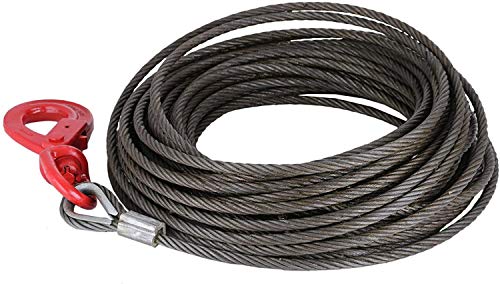
Winch Cable Pull Rating:
This is the maximum amount of force that the winch can generate.
This is the maximum amount of force that the winch can generate.
Cable Diameter:
The smaller the diameter of the cable, the greater the torque (the amount of force) that can be generated.The smaller the diameter of the cable, the greater the torque (the amount of force) that can be generated.
Cable Length:
The longer the cable, the more leverage (force multipliers) you must apply to the winch to get the object moving.
The longer the cable, the more leverage (force multipliers) you must apply to the winch to get the object moving.
Weight Capacity:
The weight of the object you’re trying to move determines how much torque (force) the winch requires.
What Is Winch Cable Made Of?
A winch cable is made of various materials, including steel, aluminum, and synthetic fibers. Some types are armored with a hard plastic coating to resist damage.
Two Materialistic Winch Cable Type:
Winch cables are of two different types according to the material. They are either made of steel or nylon/synthetic material.
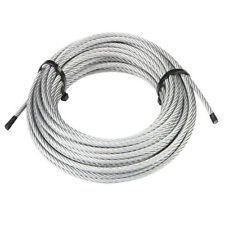
Steel Cable:
This type of cable is made of heavy, thick steel wire.
It is the most durable option and can withstand a lot of torque (force) before it breaks.
Nylon/Synthetic Cable:
This cable type is made from thin, lightweight nylon or synthetic fibers. It is less durable than steel cables but is more flexible and can withstand more torque (force) before it breaks.
Types of Steel Cable:
There are three main types of steel cable:
- Braided
- Galvanized
- Armored.
Braided Cable:
This type of cable is made from several strands of heavy steel wire braided together. It is the most expensive option and has the weakest resistance to torque (force).
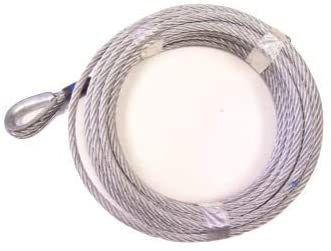
Galvanized Cable:
This type of cable is made from a thin layer of steel that has been covered in a zinc coating.
It is less expensive than braided cable and has the same resistance to torque (force).
Armored Cable:
This type of cable is made from several strands of heavy steel wire armored with a hard plastic coating. It is the most expensive option and has the most vigorous resistance to torque (force).
Types of Nylon/Synthetic Cable:
There are three main types of nylon/synthetic cable: stranded, braided, and twisted-pair.
Stranded Cable:
This cable type is made from several strands of thin, lightweight nylon or synthetic fibers. It is less expensive than braided or armored cable and has the same resistance to torque (force).
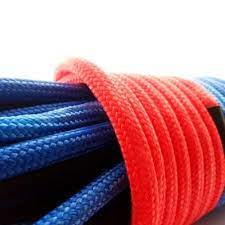
Braided Cable:
This type of braided cable is made up of synthetic fibers twisted together.
It is less expensive than an armored cable and has the same resistance to torque (force).
Twisted-Pair Cable:
This type of cable comprises two strands of thin, lightweight nylon or synthetic fibers that are twisted together. It is less expensive than braided cable and also has the same resistance to torque (force).
FAQ’S:
What Is The Difference Between Winch Cable And Line Cable?
Winch cable is designed with winches, while line cable is typically used to transmit power or signals. Winch cable is usually thicker and more robust than line cable.
What Is The Difference Between Winch Cable And Tow Rope?
Winch cable is thicker and more robust than tow rope, typically made of thinner materials and lower breaking strength.
The tow rope is often used to haul objects, while the winch cable is typically used to pull objects.
What’s A Better Cable Or Rope Winch?
Cable is preferred over the rope for winching because of its superior strength and weight-carrying capacity.
However, a lighter tow rope may suffice if you are only using your winch for occasional light-duty tasks. In either case, make sure to select the right size and type of cable or rope for your application.
Can I Replace My Winch Cable With A Rope?
Yes, you can replace your cable with rope if necessary. Just be sure to select the right size and type of cable for your application.
Some basic guidelines include using a thicker cable for heavier loads and choosing a line cable to use your winch for towing.
Quick Summary:
A winch cable is a thick, strong cable used to pull or lift heavy objects. Winch cables are typically made of steel or other sturdy materials.
They can be used for various purposes, such as hauling equipment or people. Winch cables are attached to a motor or a vehicle and can pull objects of various weights.
They can be accommodating in emergencies and often rescue people or animals. Winch cables are often purchased in bulk and valuable assets in any emergency response kit.
Video Guide:
Also Read
- One-Way Motorcycle Adventure to Anchorage In 2023
- Painting ATV plastic with Krylon fusion? – Complete Guidances In 2023!
- What Happens If You Get Caught Riding An ATV On The Road? – Explore The Consequences!
- Suitable ATV for a Really Big Guy – Must Consider This Information
- ATV Accelerating Without Giving It Gas – Facts One Must Know In 2023!
